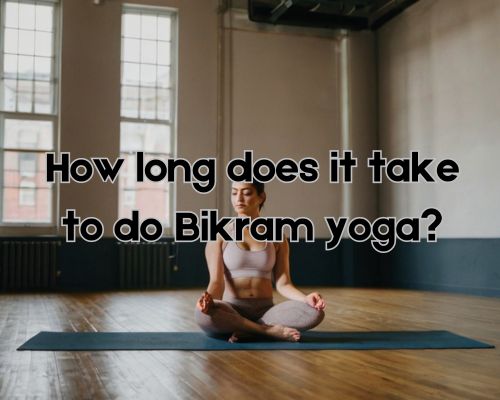Bikram Yoga was founded by Bikram Choudhury. It is a specific type of yoga that includes a sequence of 26 postures and 2 breathing exercises. A complete Bikram Yoga session lasts for 90 minutes. This provides a consistent structure that allows you to fully engage each posture twice.

“During your 90-minute session, you’ll experience a combination of standing and floor poses. Classes typically start with pranayama breathing exercises, moving through standing poses, and finishing with floor poses.” said Jane Benson from Bikram Yoga Mornington.
The duration for holding each posture ranges from 6 to 60 seconds. This ensures a comprehensive workout aimed at improving strength, flexibility, and endurance.
The heat is a crucial element of Bikram Yoga. It helps in warming your muscles to prevent injury and promote deeper stretching. This unique blend of 26 postures and 2 breathing exercises performed in a heated environment not only challenges your body but also enhances your range of motion and overall physical conditioning.
Understanding the Fundamentals of Bikram Yoga
Bikram yoga, known for its intense practice in a heated room, involves a fixed sequence of 26 poses and two breathing exercises. The practice is aimed at enhancing flexibility, strength, and overall well-being through controlled heat and prescribed asanas. Let get to know more with Jane Benson from Bikram Yoga Mornington.
The Core Elements of Practice
One of the main features is its structured sequence. You will always follow the same set of 26 postures and two breathing exercises.
Pranayama and deep breathing are integral. These techniques enhance oxygen flow and prepare your body for the strenuous asanas.
Each class lasts for a strict 90 minutes, ensuring a comprehensive full-body workout. You will often find your heart rate increasing, promoting cardiovascular health.
The Role of Heat and Humidity
The heated room plays a pivotal role. Set at 105°F (40°C) with 40% humidity, the environment is designed to simulate the Indian climate where yoga originated.
This controlled heat helps you to sweat more, aiding in detoxification. Additionally, the warmth makes your muscles more pliable. This can result in fewer injuries and greater flexibility.
Balancing in this environment also strengthens mental focus and resilience.
Bikram Yoga Poses and Sequences
The sequence begins with Pranayama, a deep breathing exercise, which is followed by 12 standing and 12 floor poses. This includes postures like Tree Pose, Cobra Pose, and Eagle Pose.
Each pose is performed twice, allowing you to deepen the stretch in the second round.
The structure ensures that each muscle group is worked systematically. You’ll notice improvements in both strength and balance. The repetition fosters muscle memory, making it easier to progress over time.
Health Benefits and Considerations
Practising Bikram yoga provides numerous benefits for both physical and mental health, but it’s important to be aware of specific precautions, especially for beginners.
Physical and Mental Health Benefits
Regular Bikram yoga can significantly enhance your muscles, joints, and overall fitness. This style of hot yoga is known for improving strength, flexibility, and joint mobility. The 26 poses and two breathing exercises work on different parts of your body, promoting muscle tone and balanced ligaments.
It also has mental benefits such as increased focus, discipline, and mental clarity. Consistent practice can help reduce stress and anxiety, contributing to better mental health. Some practitioners find relief from back pain and experience enhanced patience and overall mental well-being.
Precautions and Tips for Beginners
Bikram yoga is performed in a room heated to around 40.6°C with 40% humidity, which can pose risks if you’re not careful.
Hydration is crucial. You should drink plenty of water and consider electrolytes to prevent dehydration and nausea.
Focus on maintaining proper form and listening to instructors to avoid injuries.
As a beginner, don’t push yourself too hard; take breaks and listen to your body.
Savasana (resting pose) is beneficial for recovery during sessions. This practice requires patience and will gradually improve your overall physical and mental health as you continue.